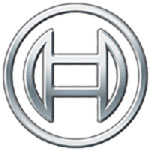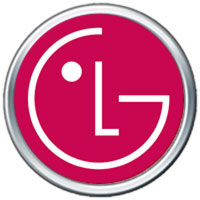
Counterweight Dampers | Purpose & Symptoms of Breakage & Price
Counterweight dampers, also known as crankshaft dampers or harmonic balancers, are critical components in internal combustion engines. These devices play a vital role in ensuring smooth engine operation, extending the lifespan of engine components, and enhancing vehicle performance. Understanding their purpose, recognizing symptoms of failure, and knowing the costs associated with replacement can help vehicle owners maintain their engines effectively. For expert assistance, contact our team at 0770029959.
Purpose of Counterweight Dampers
The primary function of a counterweight damper is to reduce vibrations caused by the crankshaft’s rotational motion. As the engine operates, the crankshaft experiences torsional vibrations due to the rapid firing of cylinders. These vibrations can lead to excessive wear on bearings, timing components, and other engine parts. The damper, typically mounted on the front of the crankshaft, absorbs and dissipates these vibrations to ensure smoother operation.
A counterweight damper consists of a metal hub, a rubber layer, and an outer inertia ring. The rubber layer acts as a cushion, allowing the inertia ring to move slightly out of phase with the crankshaft, counteracting vibrations. By stabilizing the crankshaft’s motion, the damper prevents damage to connected components, improves fuel efficiency, and enhances driver comfort by reducing noise and harshness.
In addition to vibration control, counterweight dampers often serve as mounting points for accessory drive belts, ensuring proper operation of systems like the alternator, power steering, and air conditioning. A well-functioning damper is essential for maintaining overall engine harmony and reliability.
Symptoms of Counterweight Damper Breakage
When a counterweight damper fails, it can cause significant engine issues. Recognizing the symptoms early can prevent costly repairs. Common signs of a failing damper include:
- Excessive Engine Vibrations: A worn or damaged damper may no longer absorb vibrations, leading to noticeable shaking in the engine bay, steering wheel, or cabin.
- Unusual Noises: A failing damper can produce rattling, knocking, or squealing sounds, often due to a deteriorating rubber layer or loose components.
- Crankshaft Damage: Prolonged use of a faulty damper may cause cracks or wear on the crankshaft, leading to severe engine damage.
- Accessory Belt Issues: Since the damper often drives accessory belts, a failure can result in belt slippage, misalignment, or premature wear, affecting components like the alternator or water pump.
- Engine Misfires or Performance Loss: Vibrations from a bad damper can disrupt timing, leading to misfires, rough idling, or reduced power output.
- Visible Wear: Inspecting the damper may reveal cracks, separation of the rubber layer, or wobbling during operation.
If you notice any of these symptoms, it’s crucial to have your vehicle inspected promptly. Delaying repairs can lead to catastrophic engine failure. Contact our specialists at 0770029959 for a professional diagnosis.
Price of Counterweight Damper Replacement
The cost of replacing a counterweight damper varies depending on the vehicle make, model, and labor charges in your region. On average, the price for a replacement damper ranges from $50 to $200 for the part alone. High-performance or luxury vehicles may require more expensive dampers, costing up to $400.
Labor costs typically range from $100 to $300, depending on the complexity of accessing the damper. For most vehicles, the process involves removing accessory belts, pulleys, and sometimes the front engine cover, which can take 1-3 hours. Total costs, including parts and labor, generally fall between $150 and $600.
To ensure quality, opt for OEM (Original Equipment Manufacturer) or reputable aftermarket dampers. Cheap alternatives may fail prematurely, leading to further expenses. For a detailed quote or to schedule a replacement, reach out to our team at 0770029959.
Counterweight dampers are essential for engine longevity and performance, reducing vibrations and protecting critical components. Recognizing symptoms of failure, such as excessive vibrations or unusual noises, allows for timely intervention. While replacement costs can vary, addressing the issue promptly can save you from expensive repairs. For expert advice or service, contact us at 0770029959 to keep your engine running smoothly.




